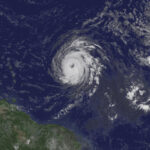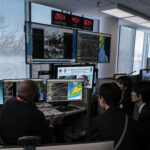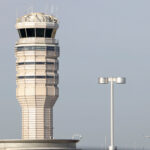Standard & Poor’s Ratings Services has raised its counterparty credit rating and insurer financial strength rating on Taiwan-based Mingtai Fire & Marine Insurance Co. Ltd. to ‘AA-‘ from ‘A’ and assigned a stable outlook. S&P said the “rating actions reflect Mingtai Insurance’s increasing importance to its financially stronger Japan-based parent, Mitsui Sumitomo Insurance Co. Ltd. (MSI – rated AA/Stable/A-1+). Mingtai Insurance became MSI group’s 100 percent-owned subsidiary in September 2005 and is strategically important to the group’s expansion in Asia.” Credit analyst Serene Hsieh added: “The ratings on Mingtai Insurance reflect the company’s strong market position, above-average operating performance, and strong liquidity with a prudent investment profile. The ratings also take into account a considerable degree of implicit support, if needed, from the MSI group. These strengths are partly offset by the company’s high use of reinsurance and the strong industry competition in Taiwan, where pricing competition is fierce.” S&P also noted: “Mingtai Insurance has a prudent track record of increasing integration with its parent group. Mingtai Insurance’s corporate logo will be changed to the MSI group’s logo and its English name will change to MSIG Mingtai in July 2008.”
Standard & Poor’s Rating Services has raised its local-currency insurer financial strength and long-term counterparty credit ratings on MSIG Insurance (Singapore) Pte. Ltd. (MSIG Singapore) to ‘AA-‘ from ‘A+’. The outlook on the long-term rating is stable. “The upgrade reflects MSIG Singapore’s stronger strategic role to the Mitsui Sumitomo Insurance Co. Ltd. [MSI; AA/Stable/A-1+] group, explained credit analyst Eunice Tan. “The insurer is making an increasing contribution to the revenue and profit of the group, and it is becoming increasingly integrated, in line with the group’s expansion plan in Asia.” S&P also indicated that the ratings “reflect the company’s sound business profile in the Singapore market, its strong capitalization, its sound operating performance and investment profile with good liquidity. However, moderating factors, such as the competitive domestic market, coupled with a soft pricing cycle, make it challenging for MSIG Singapore to meet its proactive growth target and maintain its profitability.
Standard & Poor’s Rating Services has raised its long-term local-currency insurer financial strength and counterparty credit ratings on MSIG Insurance (Hong Kong) Ltd. (MSIG HK) to ‘AA-‘ from ‘A+’. The outlook on the long-term rating is stable. “The upgrade reflects MSIG HK’s stronger strategic role in the Mitsui Sumitomo Insurance Co. Ltd. (MSI; AA/Stable/A-1+) group, explained credit analyst Paul Clarkson. “MSIG HK is making an increasing contribution to the wider group’s revenue and profit and it is becoming increasingly integrated into the group, in line with the MSI’s expansion plan in Asia.” S&P added: “The ratings also reflect MSIG HK’s good business profile and niche position in Hong Kong through a multiple distribution network, its conservative investment portfolio, and its strong capitalization. Moderating factors include a weakening, but still adequate, underwriting performance. This is partly attributable to the competitive operating conditions in the saturated Hong Kong market, where no company has a strong position. MSIG HK has a good niche position in Hong Kong’s general insurance industry, with a market share of 2.4 percent by the end of 2007. The company’s capital position relative to risk is strong, as demonstrated with a ratio of shareholders’ funds to net premium income of 354.1 percent (including goodwill from the Aviva deal) or 102.1 percent excluding goodwill. The company’s strong capitalization is supported by its prudent reserving, investment policy and reinsurance arrangements. MSIG HK’s operating performance remains adequate despite some deterioration in 2007. The company’s low loss ratio increased to 31.3 percent in 2007 from 28.4 percent in 2006, affected by accounting changes and the lower release of incurred but not reported claims in 2007. This mainly accounted for an increase in the combined ratio to 97.1 percent in 2007 from 92.3 percent in 2006.”
Was this article valuable?
Here are more articles you may enjoy.

 After the Flames: Preparing for the Growing Fraud Threat in Los Angeles
After the Flames: Preparing for the Growing Fraud Threat in Los Angeles  An Unusually Active Hurricane Season Is in Store for the Atlantic
An Unusually Active Hurricane Season Is in Store for the Atlantic  US Weather Service Merges Units as Staffing Pressure Rises
US Weather Service Merges Units as Staffing Pressure Rises  FAA Must Do Better After Midair Collision, Acting Chief Says
FAA Must Do Better After Midair Collision, Acting Chief Says 